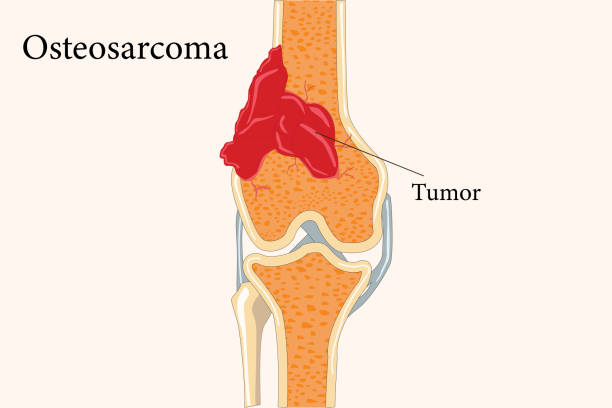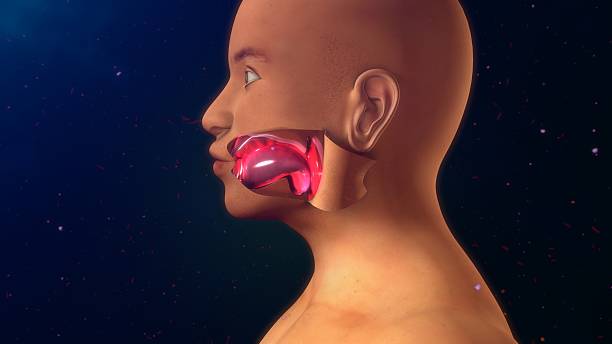Researchers led by NTU Singapore develop computer program to assist in early breast cancer detection
A group of researchers, led by Nanyang Technological University, Singapore (NTU Singapore), has developed a computer program to identify potential tumours in the human breast, making use of the observation that malignant breast tumours distribute heat differently to healthy breast tissue.
The computer program, Physics-informed Neural Network (PINN), was developed in collaboration with medical doctors and researchers from Nazarbayev University in Kazakhstan and combines artificial intelligence (AI) and heat-imaging technology.
PINN takes thermal infrared images of a breast and analyses the heat patterns within the tissue, flagging any possible malignant tumours within five minutes (see Figure 1). To calibrate or ‘train’ PINN, the scientists input the infrared breast scans of thousands of patients in Kazakhstan with and without malignant breast tumours.
The program has also been developed with consultation from medical doctors specialising in breast imaging and intervention from Singapore.
When the researchers tested PINN on hundreds of infrared images of breasts with malignant tumours, they found that the program had a 91 per cent accuracy in identifying harmful tumours. They described the program and its performance in December 2023 in Computer Methods and Programs in Biomedicine.
Globally, breast cancer is the most common cancer among women, with an estimated 2.1 million new cases and 627,000 deaths in 2020, according to the World Health Organisation (WHO)[1], which also noted that the incidence of breast cancer is increasing in many low- and middle-income countries.
While mammography is one of the most effective methods for early breast cancer detection, access to it is limited due to cost and availability. The NTU-developed tool, powered by machine learning, has the potential to serve as a complementary, non-invasive, and painless alternative.
PINN does not rely on bulky equipment and is notably quicker, using an infrared camera to capture breast images from various angles for computer analysis. As it uses heat-imaging technology, the NTU-developed tool would offer a safer option to women who are at a higher risk of developing breast cancer or have a family history of the disease, as mammograms expose the patient to ionising radiation during the procedure.
However, the researchers and clinicians involved in the program’s development say that PINN is not intended to replace existing diagnostic methods but offers a valuable, accessible tool for early detection.
Corresponding author Associate Professor Eddie Ng Yin Kwee, from the School of Mechanical and Aerospace Engineering at NTU Singapore, who led the study, said: “Our study’s findings, and the development of PINN, centers around AI’s ability to swiftly and accurately analyse vast datasets, specifically thousands of infrared breast scans. We also benefited from machine learning when calibrating PINN as it made the program easily trainable, aiding it to recognise patterns and generalise well to new, unseen data, making it adaptable and reliable. PINN could assist in the early identification of potential abnormalities in breast tissues, not only contributing to better treatment outcomes but also streamlines the screening process, allowing healthcare professionals to prioritise complex cases.”
Dr Anna Midlenko, a Clinical Instructor in the Department of Surgery at Nazarbayev University and a surgical oncologist who consulted on the development of the program, said: “Tumours, including breast cancer tumours, often have distinct metabolic activity and blood supply compared to normal tissue. As a result, they may generate more heat or have different thermal properties. PINN, which could flag the presence of possible problematic areas in a subject’s breast, could serve as a more accessible test for early detection of breast cancer, especially when the tumours are not yet palpable during self-breast examinations.”
The study, which represents an advance in diagnosing breast cancer, reflects NTU’s commitment to responding to the needs and challenges of healthy living and ageing, one of four humanity’s grand challenges that the University seeks to address through its NTU 2025 strategic plan.
The NTU Singapore scientist, Assoc Prof Ng, developed the tool in consultation with healthcare professionals in Singapore, namely Adjunct Associate Professor Gregory Kaw Jon Leng, Senior Consultant at Tan Tock Seng Hospital Singapore and Dr Llewellyn Sim Shao-jen, Director of Breast Imaging in the Department of Diagnostic Radiology at Singapore General Hospital. The two professors were co-authors of previous papers that developed the program’s scope in diagnosis, fine-tuning it by introducing samples of Singaporean women to provide a more accurate diagnosis for local patients.
Providing an independent comment on the study and PINN, Adjunct Associate Professor Chong Bee Kiang, Senior Consultant at Tan Tock Seng Hospital Singapore, who specialises in breast Imaging and intervention, said: “PINN could be crucial in encouraging women to make that ‘half-step’ towards regular mammograms. However, it is important to note that this method should be used in conjunction with other diagnostic methods, such as mammography, biopsy, or clinical examination, for a comprehensive assessment of breast health. While heat distribution or thermal properties can be indicative of breast cancer, they are not the sole criteria for diagnosis, and a combination of imaging and clinical information is usually needed for an accurate assessment.”
A portable new tool for early breast cancer detection
The researchers are currently improving PINN so it can run as a stand-alone application before installing it onto a portable device equipped with a graphics processing unit and infrared camera. They envision that the tool would help make routine breast examinations more accessible and simpler.
Assoc Prof Ng added: “We are now carrying out ongoing research focussing on further developing our program to predict tissue properties and tumour sizes and locations via inverse-bioheat transfer techniques, in the hope that PINN can provide a new portable AI tool for the early detection of breast cancer and breast self-examination.”
Dr Midlenko added: “There is immense potential in the future of PINN for overall health. It represents a promising leap forward in our ability to detect breast cancer early, with greater accessibility and precision. This innovation has the potential to be a game-changer in the field of breast imaging, improving the lives of countless individuals through earlier and more effective early diagnosis, which is being promoted by WHO as an effective approach in the global fight against breast cancer.”
Full bibliographic information
Published on 05/02/2024 by Nanyang Technological University, Singapore
The research paper titled: “Physics-informed neural network for fast prediction of temperature distributions in cancerous breasts as a potential efficient portable AI-based diagnostic tool” was published in Computer Methods and Programs in Biomedicine in Dec 2023.
DOI 10.1016/j.cmpb.2023.107834





